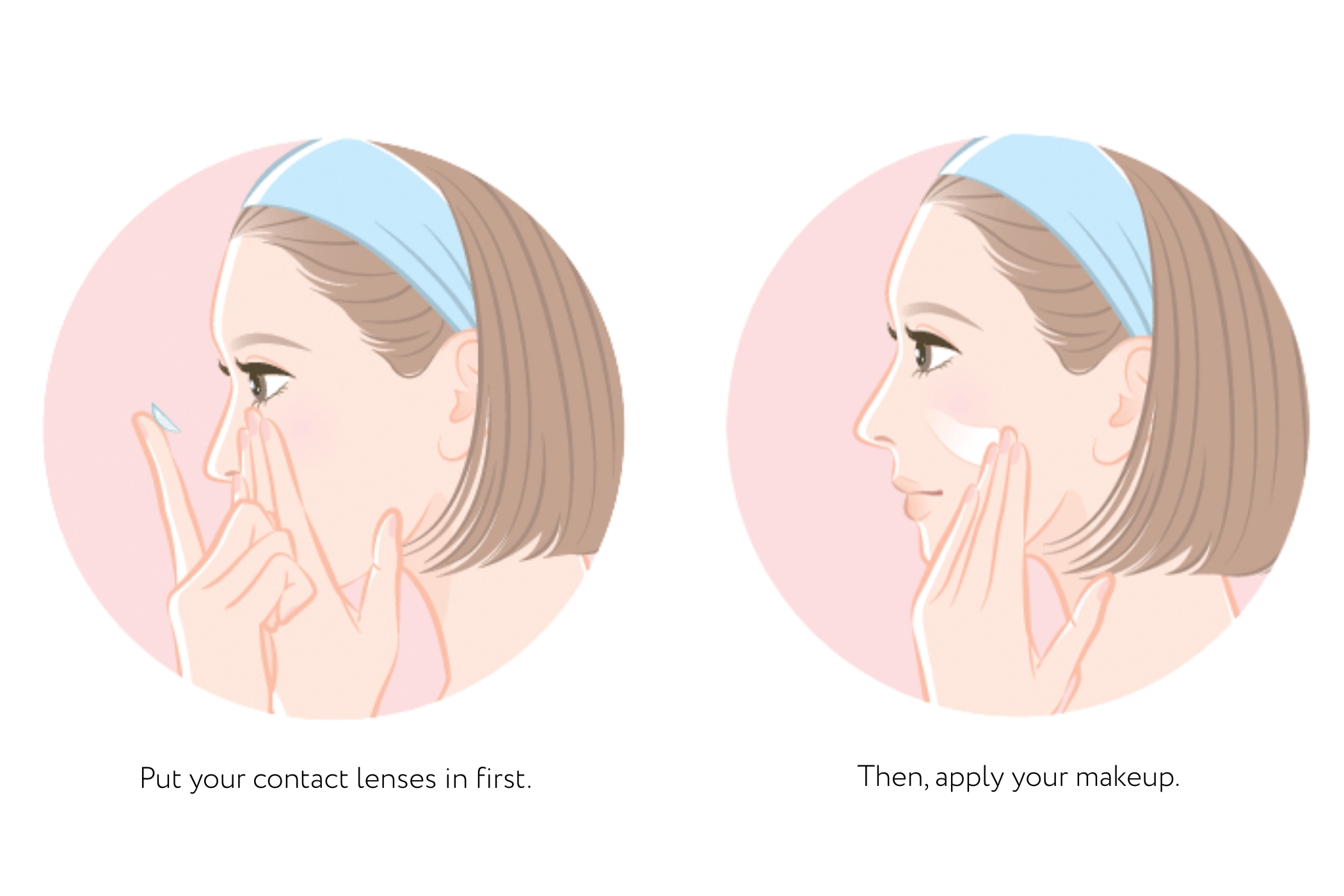
Wearing contact lenses is something more and more people are opting for, either as an alternative to glasses or in combination with traditional spectacles. They give you a more natural look and lots of people like to wear them for special occasions or for work. But if you’re the type of person who likes to wear makeup, it can mean needing to take more things into consideration when wearing your contacts. There are a few factors to consider when wearing makeup and contact lenses. Read on to learn more about it.
Should you put in contact lenses before or after makeup?
It’s always best to put your contact lenses in before you apply your makeup. This will stop debris, like glitter from eyeshadow, dust, and bacteria from getting into your eye, which can cause irritation or infection. It will also help to prevent creams and oils from your hands from getting into your eyes, which can sting or cause temporary blurry vision. Making sure you apply your lenses before makeup will also mean you can more clearly see what you’re doing as an added benefit.
When you go to remove your makeup, always remove your contact lenses first to help avoid irritation or contamination.

What to do if you get makeup in your eye with contact lenses in
If you get makeup in your eyes when you wear contact lenses, remove the lenses immediately to avoid irritation as much as possible. Clean your lenses with a cleaning solution. If your makeup is still in your eyes, or if they’re still irritated, you may need to rinse them with an eye wash or eye drops.
How to clean contact lenses if they have makeup on them
If your lenses still have makeup on them after you remove them, you will need to clean them again before re-inserting. Simply follow your usual cleaning routine (especially if you used a peroxide-based cleaning solution) or rinse with a multipurpose solution. You should also make sure to clean and store your contact lenses properly between wears (unless you wear daily lenses, which you replace every day).
Makeup products that are safest for contact lens wearers
The best type of makeup to use when wearing contact lenses include types that are kind to your skin and contain natural ingredients. Think water-based, hypoallergenic, and oil-free products, and avoid waterproof products where possible. That being said, cream eyeshadows are better than powder ones – although if you can’t give up the powders, simply apply with your eyes closed and gently brush away any fall-out or excess before opening your eyes again.
What to avoid when wearing contact lenses and makeup
Apply makeup safely, such as using clean brushes, not using expired makeup, and never sharing makeup someone else has used.
- Keep your makeup and applicators clean to avoid contamination and bacteria getting into your eyes.
- Never use expired makeup – makeup can harbour bacteria, which can cause irritation and infections. Throw out old makeup like mascara and eyeliner and replace them regularly according to the expiry dates.
- Don’t share makeup – bacteria and viruses can live on sponges and brushes and can be transmitted to you from others.
- Always be sure to keep false eyelashes clean. Not only can the adhesives from permanent false lashes cause irritation, but skin and sebum build-up at the base of the lashes themselves can affect your contacts. Always make sure to keep your false lashes clean to maintain good eyelid health and comfort.
Contact lenses which are best for makeup wearers
Daily contact lenses are ideal for those who wear makeup on a regular basis. They’re specially designed to moisturise your eyes really well and can be removed and thrown away rather than needing to be cleaned between wears. Additionally, if you get makeup in your eye throughout the day, you don’t have to carry cleaning solution and case with you, simply remove and dispose of them instead.
When to replace your contact lenses if they get contaminated
If you get makeup on your lenses, you should always remove them and rinse them with an appropriate contact solution before putting them back in. However, sometimes, they will still have residue or debris that sticks. If you notice any signs of irritation, discomfort, blurry vision, or anything out of the ordinary, it’s best to dispose of your contact lenses and put in a fresh pair instead to avoid potential eye issues.
Attending regular eye check-ups is also essential to maintaining good eye health and lens prescriptions. Book an eye test with Leightons for expert advice on contact lens care.
If makeup gets on your contact lenses, you should replace them immediately if you notice any signs of irritation, discomfort, blurry vision, or significant residue on the lens, even after rinsing with contact lens solution; in most cases, it's best to simply discard the lens and put in a fresh one to avoid potential eye problems.
Takeaway
Whether you prefer a subtle ‘no makeup’ look or love to go bold with bright eyeshadow, you can still enjoy wearing makeup if you wear contact lenses as long as you follow some simple safety steps. Always apply your lenses before your makeup (and remove them before removing makeup), clean or replace your lenses if you get makeup in your eyes, make sure you’re using gentle cosmetics to avoid irritation, and never share or use expired makeup.
If you have any concerns or questions about your lenses, always see a professional for advice.







